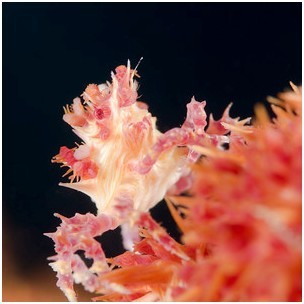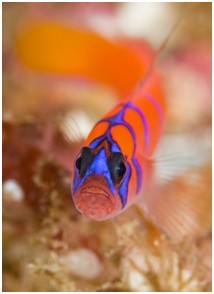 |
After enjoying the photography of land animals, you might want to take a peek at the life underwater. Now, diving is become an easy entertainment for us. Once going deep in the sea, don' t forget to take a shot of those lovely creatures. Now, let's learn from Scott
Gietler for taking a perfect underwater macro photography.
Subject - choosing
a macro subject
 Taking great macro underwater photos
starts with research. If possible, use a guide who specialized in macro
subjects. Next, look at photos that have been taken at these locations. What
subjects are producing the best photographs, which backgrounds and compositions
look the best, what can you improve on. Based on your research, and imagined
shots, decide on which lens or lenses to take on your dives.
Taking great macro underwater photos
starts with research. If possible, use a guide who specialized in macro
subjects. Next, look at photos that have been taken at these locations. What
subjects are producing the best photographs, which backgrounds and compositions
look the best, what can you improve on. Based on your research, and imagined
shots, decide on which lens or lenses to take on your dives.
Moment - when to take the photo
To get good at underwater macro
photography, it's time to think about moment and presentation. Sometimes the
subject will be a beautiful slow-moving nudibranch all by itself. You may think
there is no good or bad moment for this subject. But even for a nudibranch,
there is often a best moment, when its gills are fully out, if it has gills.
Presentation in
underwater macro photography
Composition - Get low and evaluate different
compositions, such as head on, fill the frame, diagonal, shoot from underneath.
Try a few different compositions.
Strobe position - Based on the texture of the
subject, and the water visibility, giving the light a softer look may look
better in macro photography.
Background - Do not risk injuring a subject or
causing it to flee its habitat just to get the shot you want.
 Focus - Lock focus on their eyes and recompose.
If your camera has a movable focus point, use your arrow keys to move your focus
point to where you want. You may need to do this often if the composition changes
or your subject moves. this will help avoid a bull’s-eye composition also.
Focus - Lock focus on their eyes and recompose.
If your camera has a movable focus point, use your arrow keys to move your focus
point to where you want. You may need to do this often if the composition changes
or your subject moves. this will help avoid a bull’s-eye composition also.
Exposure - you need to check your display to ensure
a proper exposure. If you are shooting manually, you'll adjust your strobe
power up or down. A TTL converter is a big help in shooting macro.
Depth of field - Remember - there is no best F-stop for
macro photography. A large aperture (small f-stop) will blur the background,
and a small aperture will bring more of the background into focus.
Take your time, think carefully about
these items, and don’t forget to check your LCD. The better you become as a
photographer, in general you will spend more time with subjects you feel are
special, waiting for the right moment, and experimenting with your
presentation.
没有评论:
发表评论